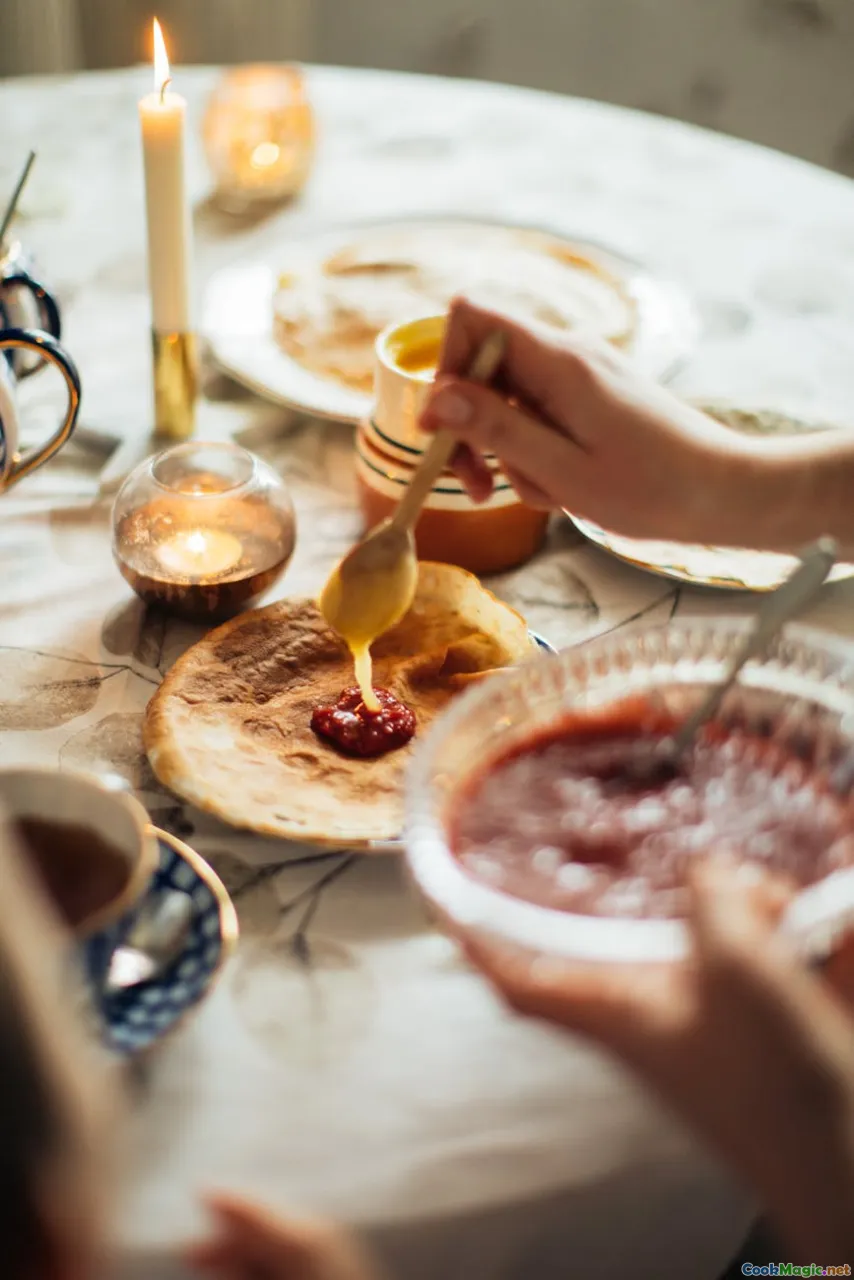Decoding the Traditional Russian Blini Spread
7 min read Discover the rich history, cultural significance, and delightful flavors of traditional Russian blini spreads in this immersive culinary exploration. April 30, 2025 21:55
Decoding the Traditional Russian Blini Spread
Imagine the gentle aroma of warm, freshly made blini wafting through a bustling Russian household, their delicate surface shimmering with a golden hue. These thin, pancake-like delights are more than just a staple; they are a symbol of Russian hospitality, tradition, and celebration. But beneath their humble appearance lies a world of rich flavors, historical significance, and cultural storytelling.
The Cultural Tapestry of Blini
In Russia, blini are woven into the very fabric of life—served during Maslenitsa, a week-long festival welcoming spring; at family gatherings, toasts, and festive feasts; and even as everyday comfort food. Their versatility allows them to be topped or filled with an array of ingredients, turning a simple dish into a canvas for culinary artistry.
The word 'blini' originates from the ancient Slavic term for 'little pancakes,' but their roots stretch deep into the annals of Russian history. Historically, blini were considered sacred, associated with the sun due to their round shape and golden color, symbolizing warmth and prosperity.
Historical Significance and Evolution
The tradition of making blini dates back over a thousand years, with archaeological findings suggesting their presence in early Russian kitchens from the time of the Kievan Rus. Originally, they were made from buckwheat flour, which was abundant and affordable for peasants, fostering a sense of community and sustenance.
As centuries progressed, the ingredients diversified. Wheat flour became popular among the wealthier classes, adding a lighter, more delicate texture. The preparation methods also evolved, with regional variations sprouting across Russia—from the thick, hearty blini of Siberia to the thin, crispy versions of Moscow and St. Petersburg.
The Art of Making Blini
Creating the perfect blini is a blend of tradition, technique, and intuition. The batter is typically made from a mixture of flour (buckwheat or wheat), eggs, milk or buttermilk, and a pinch of salt. Some recipes include yeast or baking powder to achieve a fluffy texture.
The process begins with fermenting or resting the batter, allowing flavors to meld and gluten to develop. The skillet, traditionally cast iron, is heated until just right—hot enough to create a lacy, golden crust but not so hot as to burn the delicate surface.
Pouring a ladleful of batter, the cook tilts the pan in swirling motion, spreading it thinly and evenly. The blini cooks quickly—about a minute per side—until bubbles form and edges turn crisp. The result is a tender, slightly chewy pancake with a subtly nutty aroma.
The Signature Spreads and Fillings
No discussion of traditional Russian blini is complete without exploring their signature spreads and fillings. These accompaniments elevate the humble pancake into a celebration of flavors.
Classic Sour Cream
A dollop of thick, tangy sour cream is perhaps the most iconic topping. Its creamy richness balances the slight sweetness of the blini, providing a cooling contrast that enhances every bite.
Caviar and Smoked Fish
Luxurious and indulgent, black or red caviar atop a smear of butter or sour cream transforms blini into an opulent appetizer. Paired with smoked salmon or trout, this combination evokes the grandeur of Russian imperial dining.
Honey and Jam
For a sweeter touch, a spread of honey, berry jams, or condensed milk adds a luscious sweetness, perfect for breakfast or teatime.
Savory Fillings
Beyond spreads, blini serve as a vessel for savory fillings—mashed potatoes, sautéed mushrooms, or even minced meats—making them versatile for any meal.
Personal and Social Significance
In my own travels through Russia, I've seen how blini act as more than just food—they are a conduit for connection. During a winter visit to a Moscow family, I was welcomed into their home as they prepared a large batch of blini for Maslenitsa. The kitchen was filled with laughter, the clatter of spatulas, and the comforting scent of freshly cooked pancakes.
Sharing blini with family and friends fosters warmth and intimacy. It's a tradition that transcends generations, where each fold and topping tells a story—of harvests, celebrations, and everyday life.
Modern Twists and Global Influence
Today, chefs worldwide are reinventing the blini, experimenting with gluten-free flours, exotic toppings, and fusion fillings. In New York, for instance, gourmet versions feature avocado, crème fraîche, and even international caviar varieties.
Despite these innovations, the essence remains rooted in tradition—a testament to the enduring appeal of this simple yet profound dish.
Concluding Reflections
Decoding the traditional Russian blini spread reveals more than just culinary technique; it uncovers a cultural narrative of resilience, celebration, and community. Each pancake, with its golden hue and tender crumb, encapsulates centuries of history and emotion.
Whether topped with humble sour cream or adorned with opulent caviar, blini continue to be a symbol of Russian hospitality—inviting us to savor not only their flavors but also the stories and traditions they carry.
Next time you indulge in a stack of blini, remember: you're tasting centuries of history, culture, and the warm spirit of Russian conviviality.









